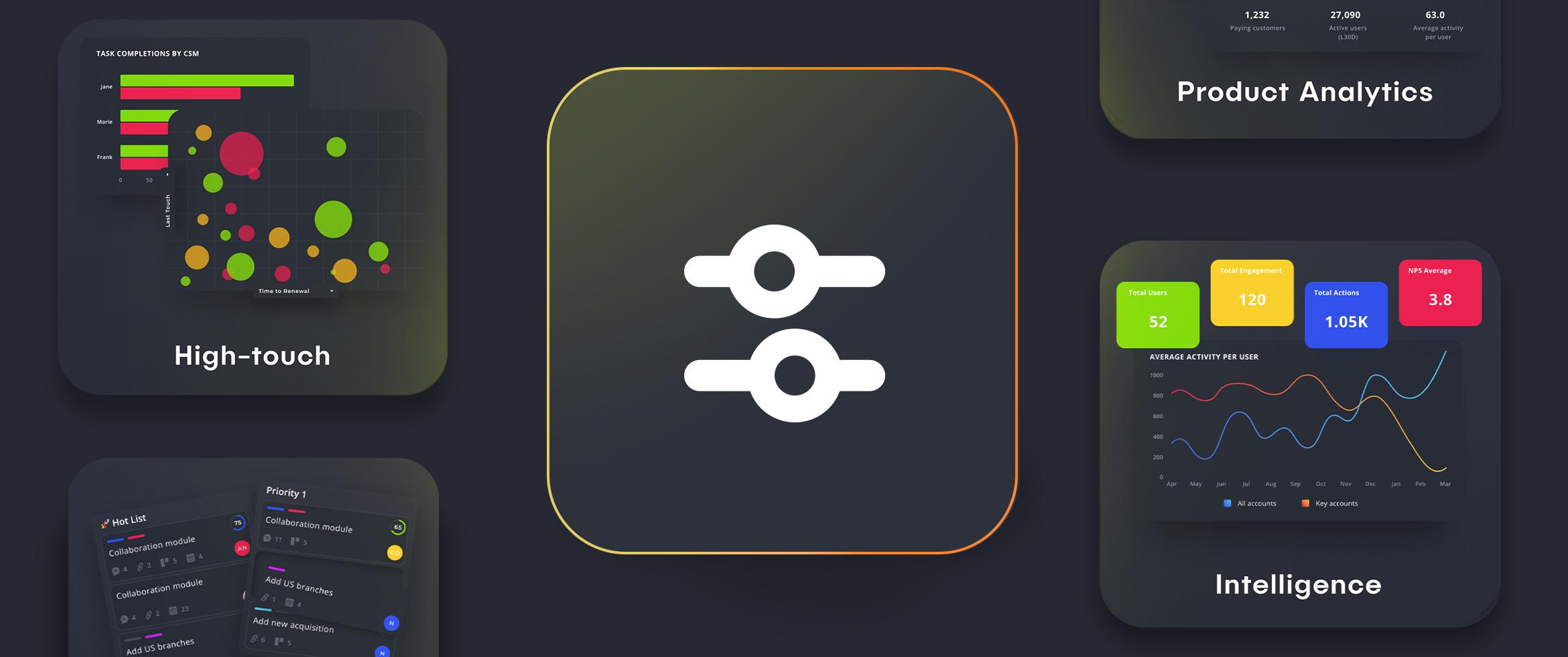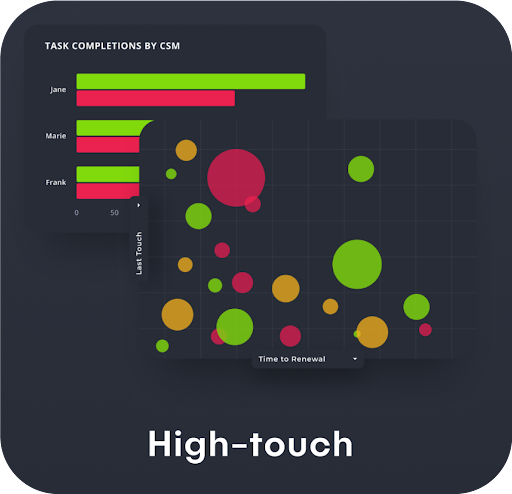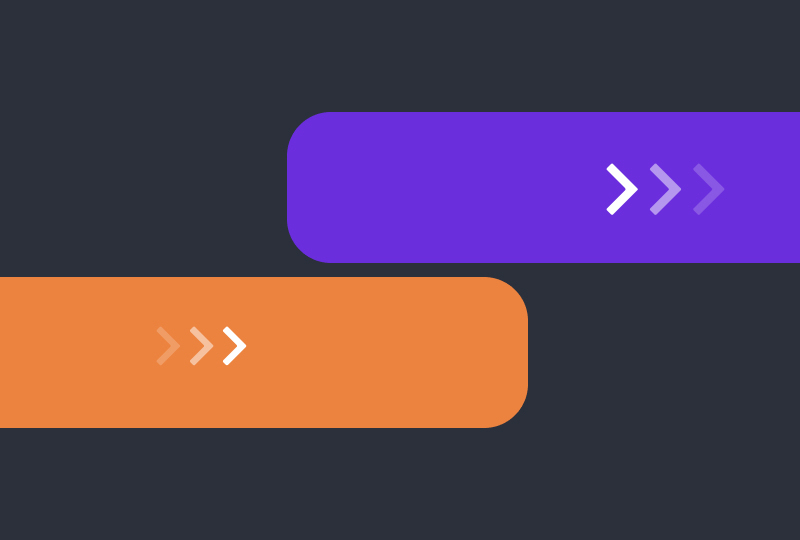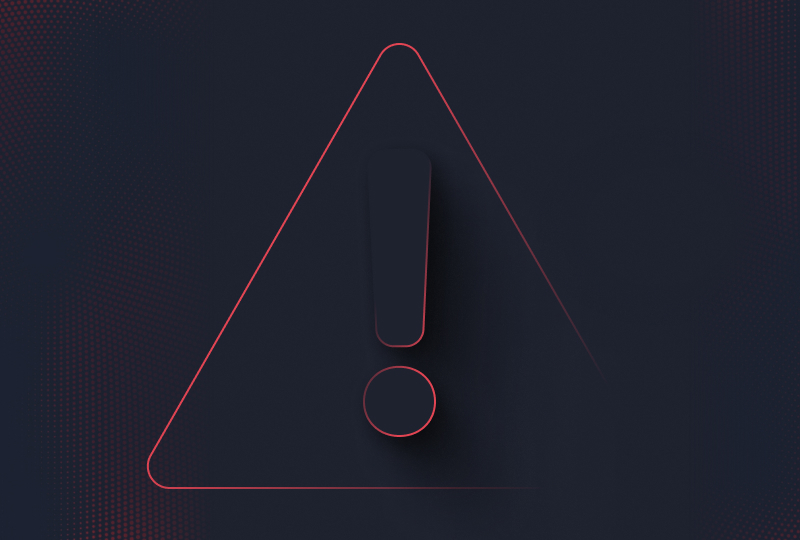2022-05-19

What Is a Customer Analysis Tool?

4 min read
In the simplest terms possible, customer analysis refers to the process or processes by which companies capture, interpret, and analyze customer data in order to make informed decisions to create (and maintain) strong customer relationships.
For many organizations, capturing customer data isn’t overly difficult, but interpreting, analyzing, and acting on the data in a meaningful way is another story altogether. This is where customer success analytics enter the conversation.
When used well, data analysis tools and techniques empower customer success managers (CSMs) with the actionable insights they need to drive positive outcomes, including (but by no means limited to):
-
Increased brand awareness
-
Increased customer satisfaction
-
Increased customer retention
-
Increased sales and revenue
-
Lower lead generation and acquisition costs
In this blog, we’ll outline the different types of customer analytics and explain how Planhat helps modern companies to better understand, serve, and grow their customer base.
What Should a Customer Analysis Include?
To be effective, an organization’s customer analytics model should be built on a foundation of complete, accurate, and up-to-date customer data. A well-rounded picture of the customer experience requires a few different types of customer data and helps CS teams to better understand who their customers are, their needs and preferences, and how they feel about your company.
Who Are Your Customers?
CS teams and leadership can learn a lot about their customers by piecing together their customer information and interaction data. A company’s customer relationship management (CRM) system provides this foundation of relevant customer and interaction data. Keeping this data centralized within the CRM or other database helps CS teams to better understand and serve their customers, including individual contact names, job titles or roles within the organization, and more.
What Are Their Needs and Preferences?
By exploring behavioral data, companies can discover a deeper understanding of not just who their customers are, but also how their expectations are met (or not met) as their relationship with the company grows. Tech companies are especially well-positioned to capture and analyze behavioral data. For example, certain actions—like signing up for a mailing list or a free product trial—indicate a willingness to buy. When companies can understand what motivates specific customer actions, they can more easily anticipate (and meet) prospects’ needs.
How Do They Feel About the Company?
Finally, the third important aspect of a well-rounded customer analysis is based on their sentiment toward the company, which helps with understanding how to mitigate customer churn and improve retention rates. Customer satisfaction and Net Promoter Score surveys provide a great jumping-off point for assessing how customers feel about the company—and how willing they might be to not only renew their own contracts, but recommend you to others as well
What Are the Different Types of Customer Analytics?
By definition, customer analytics involves ÖÄ. There are generally four different phases or types of customer analytics, which we’ll take a moment to define.
-
Descriptive: Studies past customer behavior through customer success KPIs, churn and retention rates, and more. This provides a baseline for understanding the customer experience.
-
Diagnostic: Works to identify the “why” behind customer behavior, in order to determine what approaches or techniques work well and where opportunities to create better customer relationships might lie.
-
Predictive: Applies descriptive and diagnostic insights in order to anticipate (and mitigate) customer churn or improve retention, so that positive future outcomes can be maximized.
-
Prescriptive: Attempts to apply descriptive, diagnostic, and predictive analysis techniques to better understand how to influence customer behavior—essentially “prescribing” a solution to previous phases’ diagnoses.
How Do Customer Analytics Tools Empower CSMs?
Customer analytics tools are a modern innovation, and they empower customer success managers and teams to access, understand, and act on timely insights. They bring together all the data and analytics CSMs need so that they can fully understand customer behavior and analytics in real-time. Planhat, named as a “Leader” in G2’s Spring Report, provides all of this and more in a platform that is intuitive, streamlined, and flexible.
Planhat takes many industry standard features and offers more dynamic, flexible functionality. Take, for example, “Customer Health — our platform empowers CSMs with the ability to experiment with custom health scoring, understanding that one size does not fit all.

Our platform enables a high-touch approach to customer success, collecting vital data at every customer touchpoint and bringing it together in a single interface. This makes identifying actionable insights—and actually acting on them—a more intuitive process.
Planhat was built to empower CSMs with the data and analysis they need to understand and optimize virtually every aspect of customer relationship development, from seamless customer onboarding to mitigating churn.
Learn more about how Planhat’s modern customer platform can redefine customer success.
Join our newsletter!
Receive the latest news, updates, and invitations to our events.
Being data-driven, are we there yet?
Being data-driven should be standard nowadays, but many organizations still struggle with it. Every company wants to be data-driven, but putting it into practice is the tough part.
How to transition from a cost center to a profit center in CS
Many in CS shy away from the commercial aspects of the business, but it's a missed opportunity to keep the conversation moving around maximizing and driving value for customers.
It's worth the risk: Identifying and managing risk in CS
When faced with risk in CS, it’s hard to know what the first step should be. We've developed an actionable plan based on experience from three CS experts.
Learn more about
Planhat
Drop your email and let us show you our platform!











